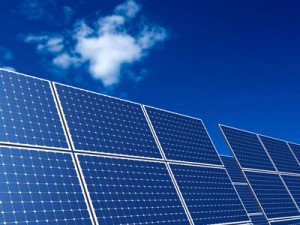
By Brett Wilkins
Driven significantly by dramatically reduced fossil fuel imports following Russia’s invasion of Ukraine, solar production soared nearly 50% in the European Union this year—with even greater growth forecast for 2023, a report published this week by an industry group revealed.
“We’re building a secure, green, prosperous Europe on a foundation of solar.”
SolarPower Europe said in the introduction to a new report that “2022 was the year when solar power displayed its true potential for the very first time in the E.U., driven by record high energy prices and geopolitical tensions that largely improved its business case.”
No longer encumbered by serious supply chain bottlenecks due to the Covid-19 pandemic, the 27 E.U. nations added 41.4 gigawatts (GW) of new solar photovoltaic (PV) capacity to their grids, a 47% increase over 2021. That’s enough to power the equivalent of around 12.4 million homes.
“The numbers are clear. Solar is offering a lifeline amid energy and climate crises,” SolarPower Europe CEO Walburga Hemetsberger said in a statement. “No other energy source is growing as quickly or reliably as solar. We’re building a secure, green, prosperous Europe on a foundation of solar.”
Ten E.U. countries added at least 1 GW of solar power this year. Perennial leader Germany again paced the E.U. in PV installation, adding nearly 8 GW. Spain followed closely, adding 7.5 GW, or 55% more than in 2021. Poland (4.9 GW), the Netherlands (4.0 GW), and France (2.7 GW) rounded out the top five E.U. solar powers.
Russia’s invasion of Ukraine, now approaching the 10-month mark, has spurred record growth of renewable energy in Europe. Not only has this accelerated the green energy transition amid the worsening climate emergency, it has also helped offset soaring gas costs.
Research published in October by think tanks E3G and Ember revealed that record European wind and solar production averted €11 billion ($11.7 billion) in extra gas costs since Russian troops invaded Ukraine on February 24.
“Wind and solar are already helping European citizens, but the future potential is even greater,” Ember senior analyst Chris Rosslowe said at the time.
According to the International Energy Agency—which last year stressed the necessity of swiftly shifting from fossil fuels to clean energy—E.U. countries must installapproximately 60 GW of solar power next year to make up for gas shortfalls caused by the reduction of Russian supplies.
SolarPower Europe is “confident that further annual market growth will beat all expectations, exceed 50 GW deployment level in 2023, and more than double from today to 85 GW in 2026.”



Leave a Reply